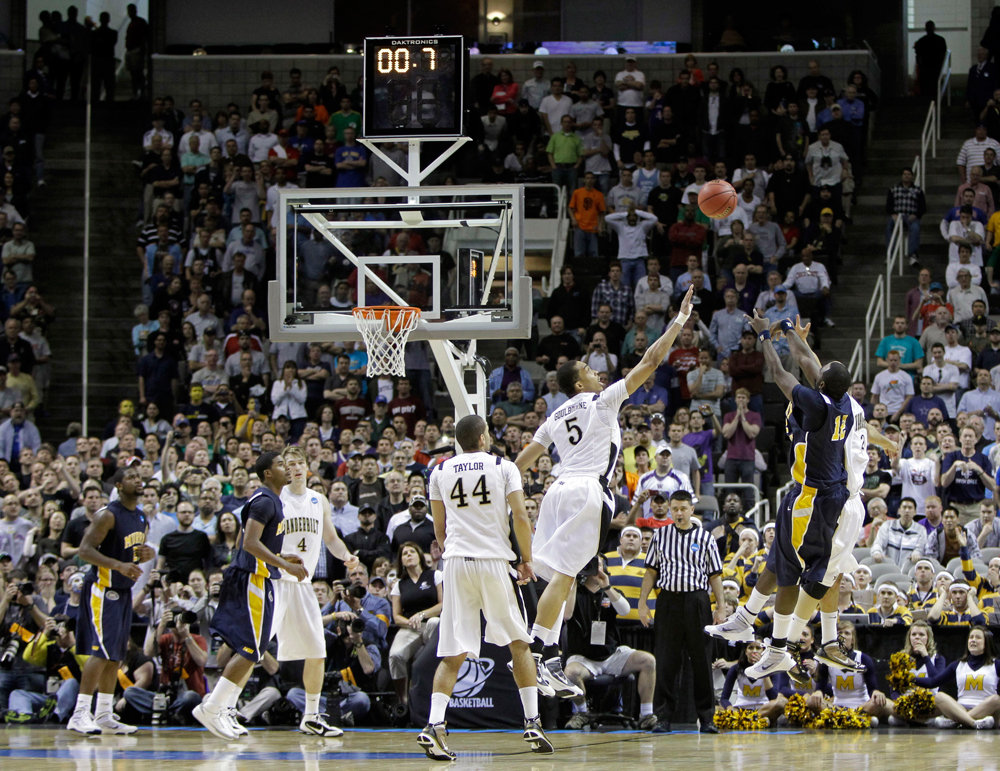HSAC Analyses: Time Out Before Last Possession Benefits Defense
Posted by jstevrtc on August 31st, 2010Those folks from the Harvard Sports Analysis Collective have been at it again, continuing what will apparently be a series of analyses of close basketball games. They’ve released two more sets of data, one that says the defense benefits from a time out being called before a team that trails by two points or less takes its last possession, and another that verifies this defensive advantage in situations where the score is tied. The benefit comes from the fact that a foul on the leading/defending team is less likely to be called because a coach has time to communicate with his players and set his defense. This is important because their data from last season also shows that offenses which draw fouls on the defense in these situations score almost twice as much (1.62 points per last possession) on the average than offenses that do not draw fouls (0.878 points).
As college basketball fans, we’re all familiar with the scenario. Close game, just a few seconds left. Team A is up on Team B by two points or less. A time out is called. The last possession then follows, and Team B wants to either score or draw a foul on Team A. The HSAC says that Team A benefits from a time out because if they can set their defense, they’re less likely to have a foul called on them (the actual numbers are below).
When we first read their write-up about situations where a team trails by two points or less, we wondered if the analysis had been based on the time out being called by the team about to play defense (Team A above). From their site:
Teams were much more likely to draw a foul if they did not call a timeout before that possession. Teams drew fouls on 13 percent of end-of-game possessions when they did not call a timeout. Teams that called a timeout only drew fouls on 8 percent of their possessions. This difference was strongly statistically significant (p=0.001).
We took that to mean that the defense had just called the time out, which would have been a problem, since that’s not usually how it happens, from our experience. If Team A scores late in a game and takes a one- or two-point lead, it’s almost always Team B, the team who just got scored on, who calls the time out. If the HSAC analysis would have only considered the scoring team having called the time out, to us it would have meant a lack of real-world generalizability. If the benefit is that the defense is able to set itself, it shouldn’t matter who calls the time out. We contacted the HSAC about this, who confirmed to us that the analysis was based on either team calling a time out, not just the leading team (Team A).
This information seems to jibe with their second new analysis regarding games that are tied at the last possession, an analysis which shows that offenses that do not call time outs in these scenarios score more points and score more often than when they do call a pre-possession time out — an interesting conclusion, since it’s almost always the team about to go on offense that calls for a time out. When you put these studies together, if you buy the numbers, it seems to indicate that in these last-possession situations, what the coach on defense tells his team is more valuable than what the coach of the offensive team tells his players, assuming everything that’s discussed is executed properly.
The HSAC (as anyone doing a statistical analysis should) points out that there are other factors in these situations can certainly come into play that can’t be accounted for in their analyses, and they invite comments and questions. It’s true that their work in these two recent analyses is based only on games from 2009-2010. Even Joel Greenblatt’s Magic Formula for picking stocks can fail for short stretches, so it’d be a real blockbuster if we had the HSAC’s analysis for games over multiple seasons. But, if last season can be considered a “typical” year in the sport with regard to close games, then the practice of calling a time out before your team takes its final possession should at least be called into question.
What we want to know is how many coaches are reading the HSAC website. If they believe the HSAC’s numbers, might we see teams that need a basket to tie or barely win a game not call a time out? The HSAC has given us reason to think that, even though it’s usually the team about to go on offense that calls the time out in those situations, they might just be helping their opponents by doing so. We’re betting Korie Lucious agrees…










































